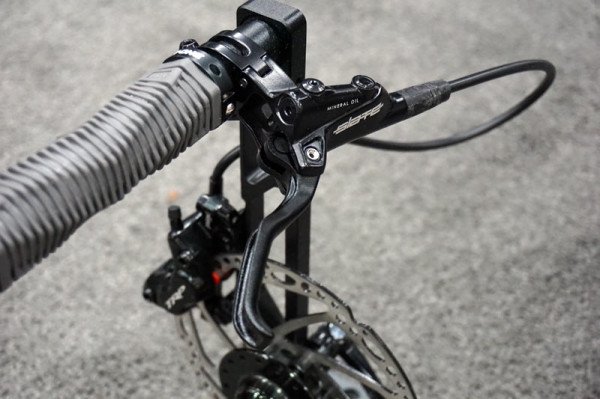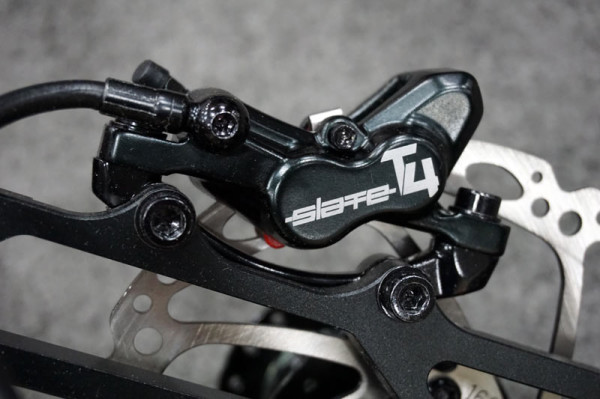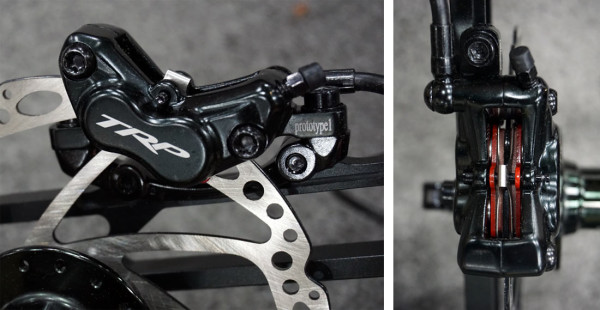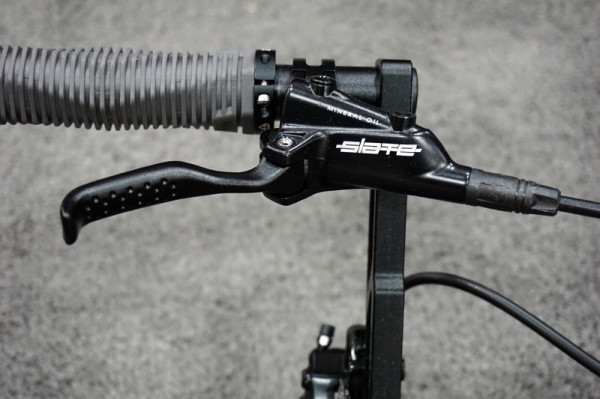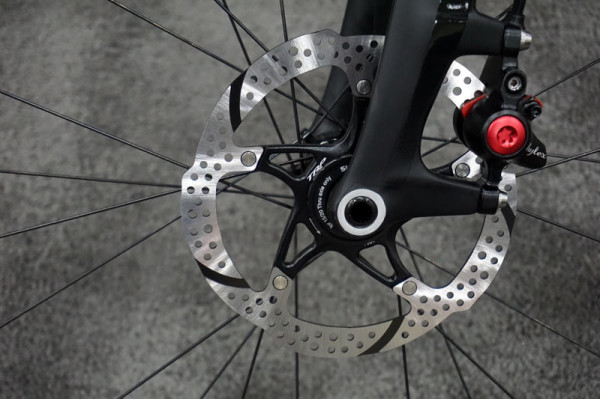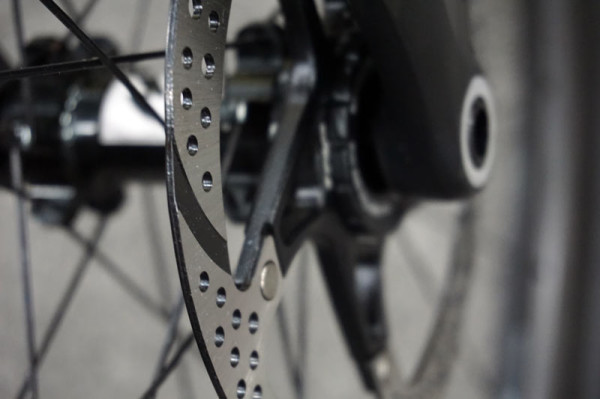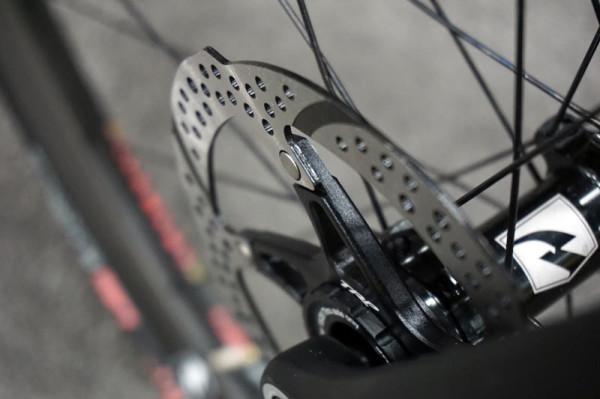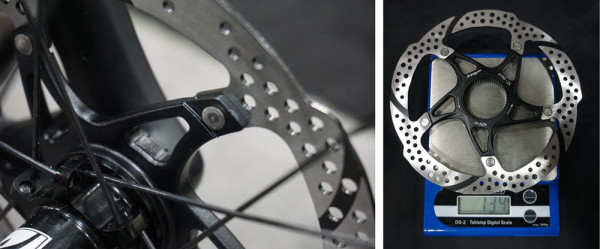TRP teased us with their new center lock disc brake rotor just before NAHBS, promising all the details once we arrived. To our surprise, they had another, bigger new product waiting along side it!
The new Slate hydraulic disc brakes are designed as a much lighter brake than the Quadiem while offering equal braking power. The weight savings comes from making the lever a lot smaller and removing material here and there, and these may end up just replacing the Quadiem line altogether. TRP’s marketing manager Lance Larabee told us the Quadiems were a bit overbuilt and overkill for most riders, and the new Slate work just as well, only lighter.
Stop in below for closeups on the rotors and more…
The Slate T4 is the model you’ll be seeing on the aftermarket. It’s a 4-piston trail brake with a banjo hose fitting so you can set it up with smooth hose angles no matter which way your frame’s sending it.
It’s housing two 11mm and two 14mm pistons. The bleed port is on the inside top front corner, which should provide easy access regardless of mounting position. Pads are top loading with plenty of room around them, so they’ll fit aftermarket finned pads. There’ll be an X2 2-piston model for OEM customers only.
To start, there’s only an alloy lever option, but the Quadiems have an SL version with carbon lever, so it could be coming here in the future. They run mineral oil and have a tooled reach adjust. Claimed weight is 279g for front, which is a whopping 67g less than the Quadiem and 35g less than the Quadium SL.
Pricing is $119 per wheel, and that’s just for the brake (lever and caliper). Rotors will now be sold separately, letting you choose size and type and any adapters on your own. The benefit is a lower per wheel cost if you already have rotors, and for dealers, it makes it easier to stock them since they won’t get stuck with a boxed set holding rotor sizes no one wants.
As center lock hubs become more prevalent, especially on road and cyclocross wheels, they needed something of their own to offer along with their brakes. The new TRP Centerlock-25 rotor is the solution, and the design has an interesting groove feature.
Five curved, slanted indents around the brake provide a release for gas buildup and help clear any debris from the brake pad. The edges are rounded so they won’t slice away your pads – TRP’s rep said there’s no appreciable difference in pad wear between these and normal rotors.
They also said they have a really nice bite, and that the grooves do not introduce any sort of pulsing feel to the braking.
Retail is $49.99 (140mm / 160mm), $54.99 (180mm) and $59.99 (203mm). Weight for the 160mm is 134g. Available soon.
